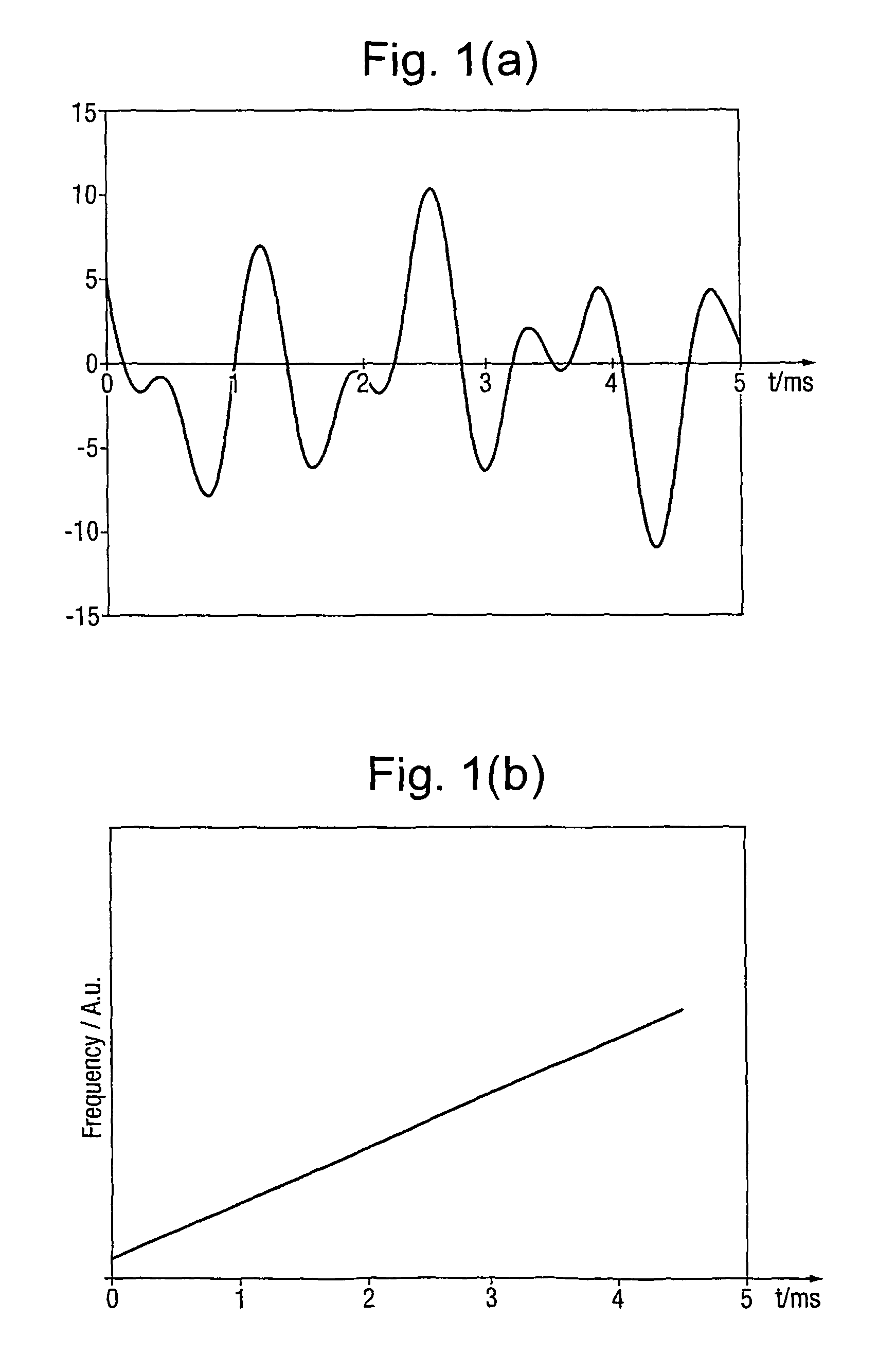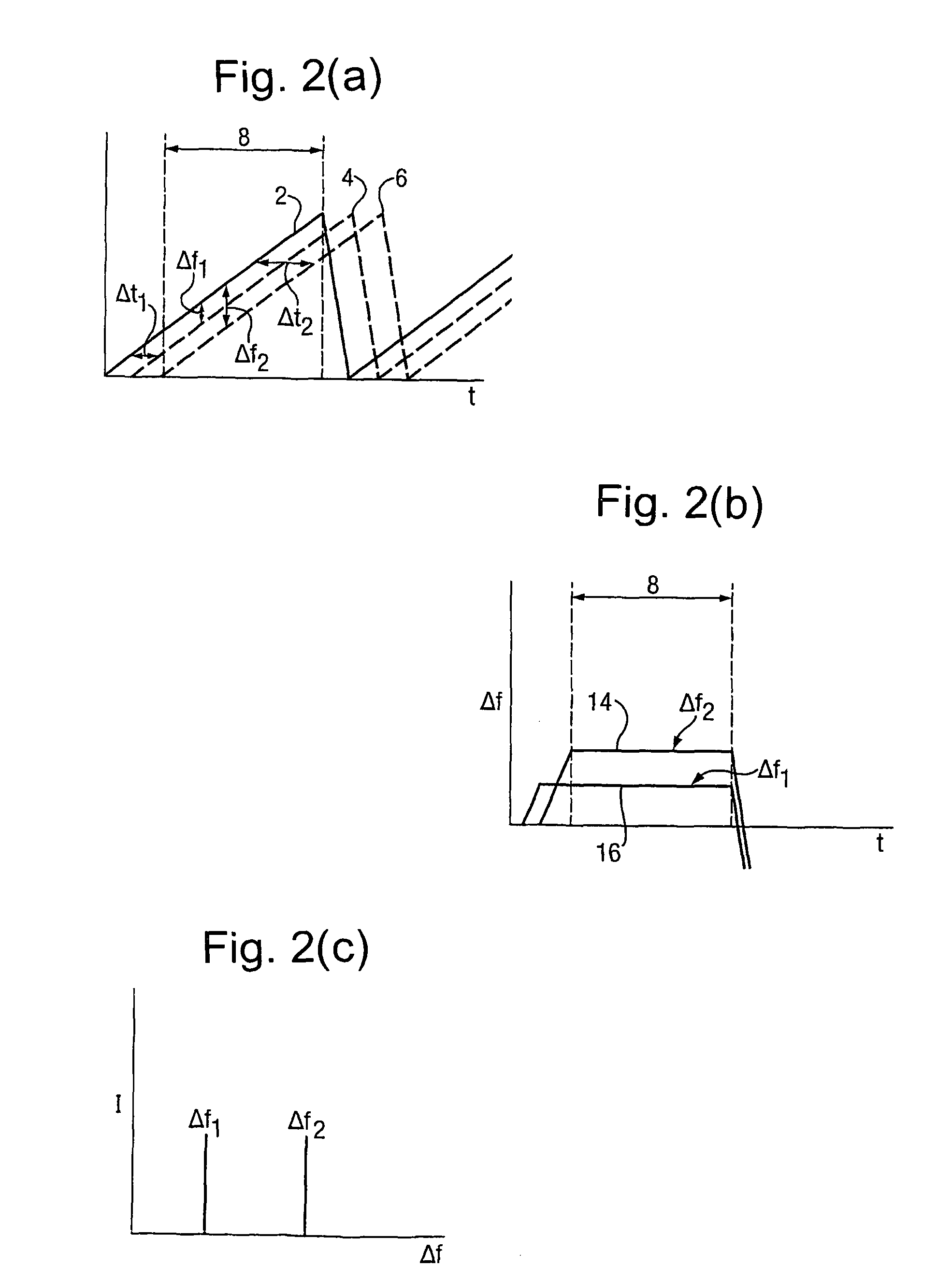Coherent frequency modulated continuous wave radar
a coherent technology, applied in the field of frequency modulated continuous wave (fmcw) radar, can solve the problems of limiting the development of coherent fmcw radar systems, radars are not able to measure the difference in phase between transmitted and returned signals, and the range resolution of fmcw radars is seriously degraded, so as to achieve the effect of improving range sensitivity
- Summary
- Abstract
- Description
- Claims
- Application Information
AI Technical Summary
Benefits of technology
Problems solved by technology
Method used
Image
Examples
Embodiment Construction
[0092]Referring to FIGS. 1(a) and 1(b), the underlying principle of an FMCW radar that is linearly swept in frequency is illustrated. FIG. 1a illustrates the amplitude of the received signal (after down-conversion) as a function of time for an FMCW radar whilst FIG. 1b illustrates the variation in frequency of the radar output as a function of time.
[0093]FIGS. 2(a), 2(b) and 2(c) illustrate how range information can be determined using an FMCW radar. Line 2 of FIG. 2a shows the saw-tooth frequency variation of the transmitted signal of the radar, line 4 shows the frequency variation with time of a signal returned from a target at a first distance d1 from the radar and line 6 shows the frequency variation with time of a signal returned from a second target at a second distance d2 from the radar. In this case, the target at d2 is approximately twice the distance from the radar as the target at d1.
[0094]It can be seen that line 4 is time shifted (i.e. delayed) from line 2 by Δt1, whils...
PUM
 Login to View More
Login to View More Abstract
Description
Claims
Application Information
 Login to View More
Login to View More - R&D
- Intellectual Property
- Life Sciences
- Materials
- Tech Scout
- Unparalleled Data Quality
- Higher Quality Content
- 60% Fewer Hallucinations
Browse by: Latest US Patents, China's latest patents, Technical Efficacy Thesaurus, Application Domain, Technology Topic, Popular Technical Reports.
© 2025 PatSnap. All rights reserved.Legal|Privacy policy|Modern Slavery Act Transparency Statement|Sitemap|About US| Contact US: help@patsnap.com



